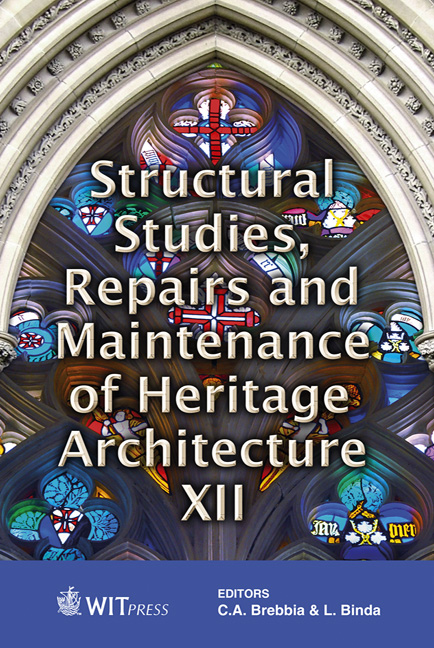Influence Of Mechanical Properties Of Materials On The Stability And Safety Of Masonry Sacral Towers Structures
Price
Free (open access)
Transaction
Volume
118
Pages
12
Page Range
429 - 440
Published
2011
Size
397 kb
Paper DOI
10.2495/STR110351
Copyright
WIT Press
Author(s)
A. Čaušević, N. Kuljuh & N. Rustempašić
Abstract
High vertical form in architecture demonstrates a tendency towards something higher or divine, something beyond the ordinary life, more than something earthly, as if it is leading us, or helping us to hear voices and sound, or perhaps to see more clearly. High vertical form in architecture is not exclusively associated with religion. It is by all means a power, and demonstration of power. In the case of construction intervention of such objects, two problems immediately emerge: the first concerns the usual and expected approach, in the most number of cases, to keep the role and geometry of constructive, now damaged elements. This situation can be additionally complicated by request, or better to say a need, which is very often present, to strengthen those elements with respect to its original state. Other, perhaps even bigger problems, concerns the possibility of embedding. In this article ten minarets and church towers are presented, carefully chosen as representatives from threatened cultural heritage towers. The computer program SAP 2000 was used to analyze the towers with shell elements. Analysis has been conducted with altered mechanical properties of the materials towers are built from as follows: modulus of elasticity, Poison’s coefficient and specific weight of the material for the cases of better material characteristics and bad characteristics of the material in relation to the actual situation. Keywords: masonry, mechanical properties of materials, tower, minaret, stability.
Keywords
masonry, mechanical properties of materials, tower, minaret, stability




